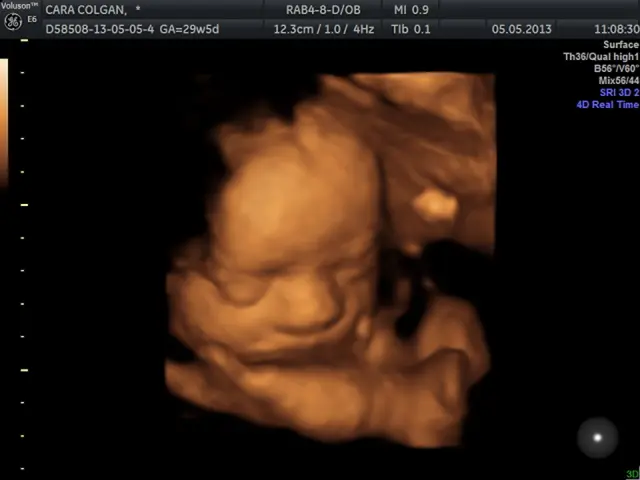Breast Cancer: Classification, Growth, and Remedies
### Treatment Options for Stage 0 Breast Cancer (DCIS and LCIS)
In the world of breast health, stage 0 breast cancer, also known as carcinoma in situ, is a significant milestone. This condition, which includes both ductal carcinoma in situ (DCIS) and lobular carcinoma in situ (LCIS), is a non-invasive stage where abnormal cells are confined to the milk ducts or lobules, respectively, and have not spread to surrounding tissue[1].
#### Understanding Stage 0 Breast Cancer
Stage 0 breast cancer, despite its non-invasive nature, can be a cause for concern due to the uncertainty of its progression to invasive cancer[1]. It is essential to understand that DCIS and LCIS are different types of stage 0 breast cancer, each with its unique characteristics.
#### Treatment Options
1. **Surgery**: Surgery is a common treatment option for stage 0 breast cancer. This can involve a mastectomy, the removal of the entire breast, or a lumpectomy, the removal of the tumor and a small margin of surrounding tissue[2][3].
2. **Radiation Therapy**: Often used after a lumpectomy to reduce the risk of recurrence[2][3].
3. **Hormone Therapy**: Hormone therapy may be recommended for patients with hormone receptor-positive DCIS, typically for five years after surgery[1].
4. **Active Monitoring (Observation)**: This approach involves regular monitoring with imaging and exams, reserving treatment for signs of progression. It is being explored as a potential alternative for low-risk DCIS and LCIS cases[1].
#### Circumstances for Recommendation
- **Surgery and Radiation**: Recommended for most cases of DCIS and LCIS due to the uncertainty of progression and to ensure removal of all abnormal cells. - **Active Monitoring**: Considered for low-risk DCIS and LCIS cases where the risk of progression is deemed low. This approach is less common but is being studied as a potential alternative to immediate surgery[1]. - **Hormone Therapy**: Used for hormone receptor-positive DCIS to reduce the risk of recurrence[1].
#### Factors Influencing Treatment Choice
- **Risk Factors**: Presence of high-grade cells, large tumor size, or genetic predispositions may influence the choice towards more aggressive treatments. - **Patient Preferences**: Some patients may prefer mastectomy over lumpectomy due to personal or aesthetic reasons. - **Emerging Research**: Ongoing studies are exploring more personalized and less invasive approaches, such as active monitoring, for low-risk cases[1].
It is crucial to remember that doctors classify breast cancer stages based on T (size of the breast tumor), N (spread to lymph nodes), and M (metastasis). Your doctor can suggest the best treatment options for your specific case.
While it is impossible to predict which presentations of DCIS or LCIS will become more aggressive and spread, most of the time, surgery is the treatment doctors recommend to remove these conditions in stage 0 breast cancer[1]. Doctors often use MRI scans, mammograms, and biopsies to diagnose breast cancer and determine its stage.
In conclusion, stage 0 breast cancer is a critical juncture in a patient's breast health journey. With various treatment options available and ongoing research, it is essential to work closely with your healthcare provider to make informed decisions about your treatment plan.
- Persons diagnosed with stage 0 breast cancer, also known as carcinoma in situ, are seeking medical-health solutions to address their non-invasive condition that includes both ductal carcinoma in situ (DCIS) and lobular carcinoma in situ (LCIS).
- Science has provided several treatment options for stage 0 breast cancer, including surgery, radiation therapy, hormone therapy, and active monitoring.
- Active switchers between different medical-conditions, such as breast cancer seekers, should understand that DCIS and LCIS are different types of stage 0 breast cancer that each have unique characteristics.
- Mental-health, health-and-wellness, and women's health communities should be aware that doctors usually recommend surgery, often the removal of the entire breast (mastectomy) or the tumor and a small margin of surrounding tissue (lumpectomy), to reduce the recurrence of breast cancer.
- Doctors may recommend radiation therapy after a lumpectomy to further reduce the risk of recurrence in stage 0 breast cancer patients.
- For patients with hormone receptor-positive DCIS, hormone therapy may be prescribed to lower the risk of cancer recurrence.
- In circumstances where the risk of progression is deemed low, doctors may consider active monitoring (observation) as a potential alternative to immediate surgery for low-risk DCIS and LCIS cases, although it is less common.







